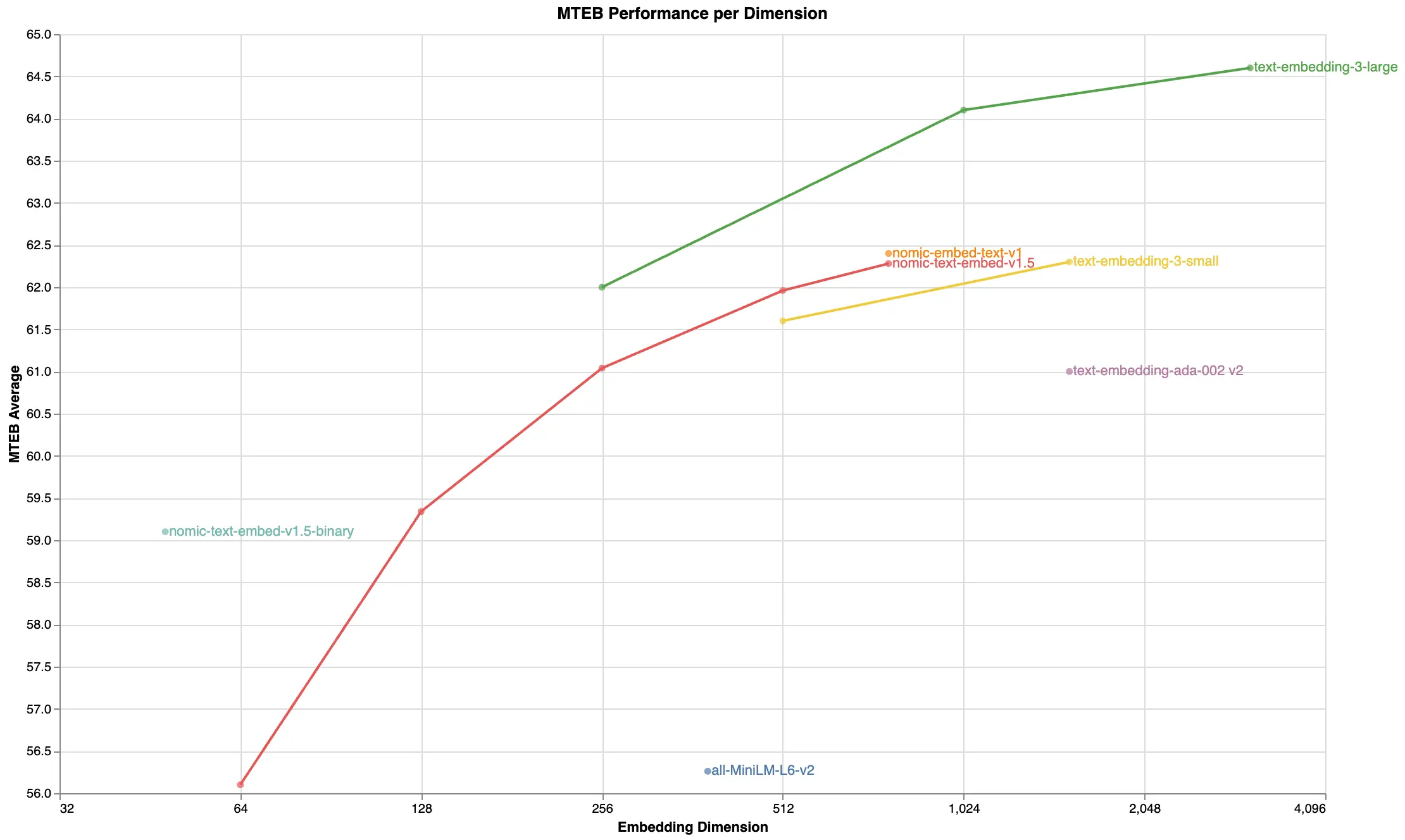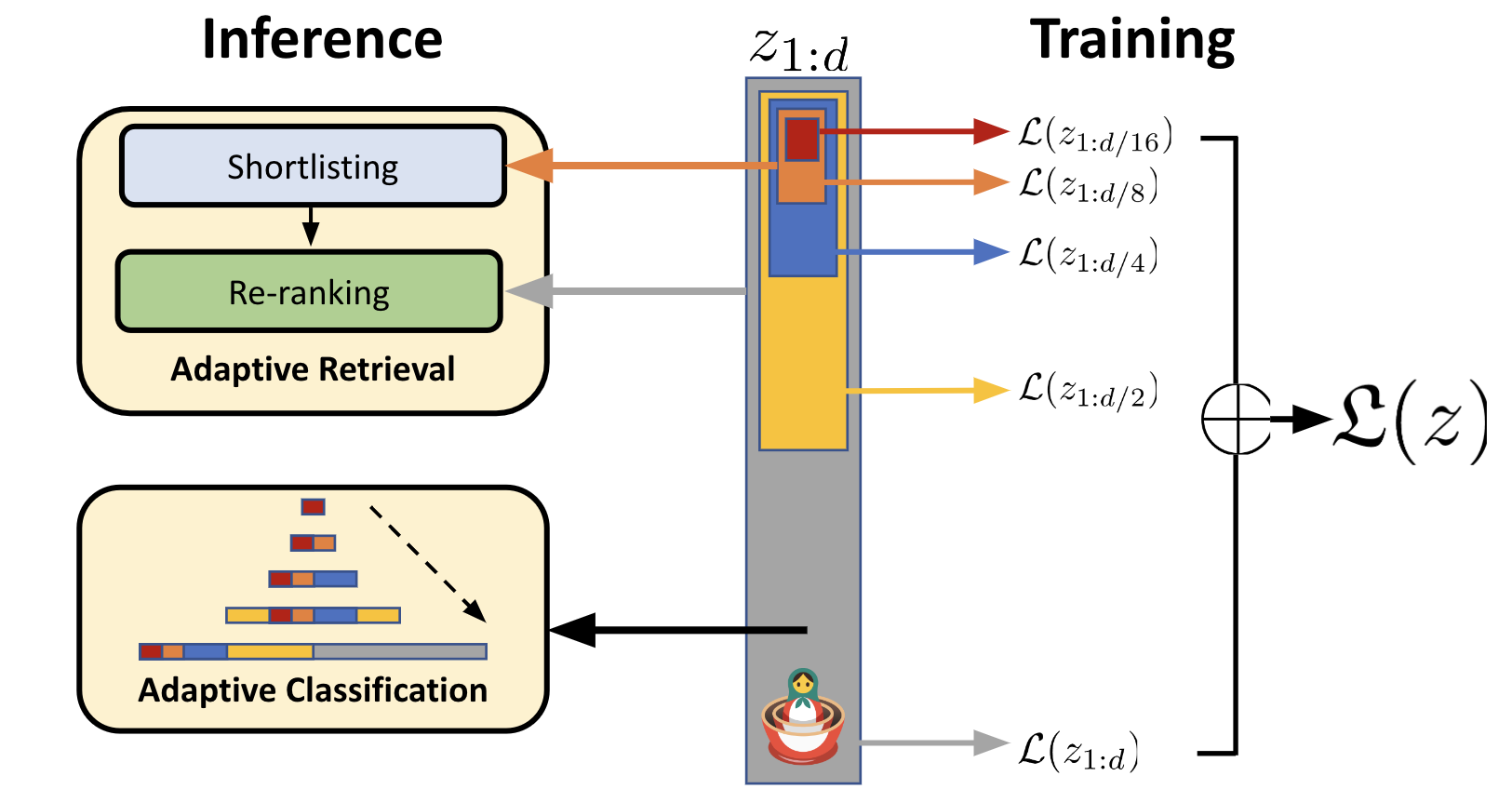

On February 1st, 2024, we released Nomic Embed - a truly open, auditable, and performant text embedding model. While the performance of an embedding model is often taken into consideration when evaluating it for production deployment, other factors including the memory, storage, and bandwidth requirements of the embeddings are also important to consider.
For example, storing the embeddings of a large dataset for a RAG app is often quite costly.
That's why we're excited to introduce Nomic Embed v1.5, which improves on Nomic Embed by giving developers the flexibility to explicitly trade off performance and embedding footprint.
We train nomic-embed-text-v1.5 with Matryoshka Representation Learning to enable variable embedding dimensions in a single model.
Nomic Embed v1.5 supports any embedding dimension between 64 and 768 as well as binary embeddings.

We finetuned nomic-embed-text-unsupervised on our nomic-embed-text finetuning dataset.
You can replicate the model and openly access the data in the nomic-ai/constrastors repository.
Nomic Embed v1.5 outperforms text-embedding-3-small at both 512 and 768 embedding dimensions.
At an embedding dimension of 512, we outperform text-embedding-ada-002 while achieving a 3x memory reduction.
At a 12x memory reduction compared to nomic-embed-text-v1, our model performs similarly to all-MiniLM-L6-v2.
We found that our 768 dimensional performance is similar to nomic-embed-text-v1 while also enabling the variable degrees of freedom.
We did not evaluate text-embedding-3-small at lower dimensions because running the evaluation is prohibitively expensive and time-consuming as the model weights are not public.
You can explore the similarities and differences between different nomic-embed-text-v1.5 embedding dimensions using the custom mapping feature in the map below:
Matryoshka Representation Learning is the technique that enables our model to have a variable embedding dimension.

Similar to the Matryoshka nesting dolls, we explicitly train our model to learn nested representations at different embedding dimensions. This allows us to truncate embeddings from the full size to reduce their memory footprint while retaining performance. For a more detailed explanation, please refer to the paper and this excellent blog post by Aniket Rege here.
Sign up to Nomic Atlas.
With the Nomic Embedding API, you can
curl https://api-atlas.nomic.ai/v1/embedding/text \
-H "Authorization: Bearer $NOMIC_API_KEY" \
-H "Content-Type: application/json" \
-d '{ "model": "nomic-embed-text-v1.5",
"texts": ["Nomic AI introduces Nomic Embed", "#keepAIOpen"],
"task_type": "search_document",
"dimensionality": 256}'
and in the official Nomic Python Client with
from nomic import embed
import numpy as np
output = embed.text(
texts=[
"Who is Laurens van der Maaten?",
"What is dimensionality reduction?",
],
model='nomic-embed-text-v1.5',
task_type="search_document",
dimensionality=256,
)
print(output['usage'])
embeddings = np.array(output['embeddings'])
print(embeddings.shape)
# to get binary embeddings
embeddings = (embeddings > 0).astype(int)